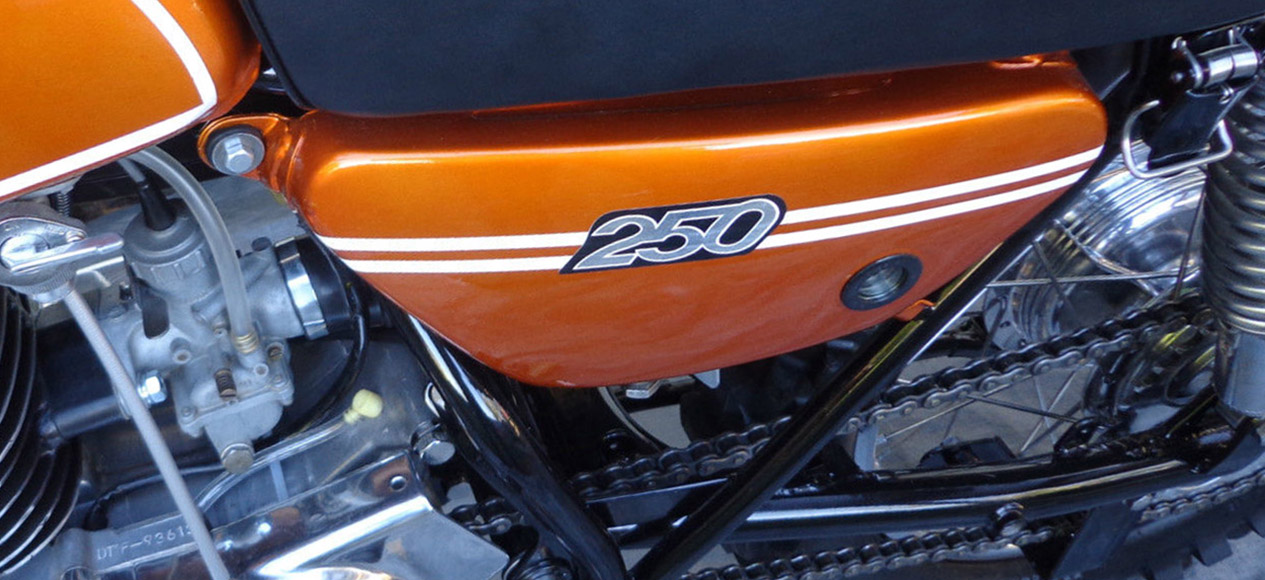Last month’s Milan motorcycle show saw small Italian manufacturer Vins unveil its two-stroke, 250cc, V-twin sports bike – the first of its kind for decades.
That got us thinking… Quarter litre two-strokes used to rule the roads, but which were the most iconic? After some serious debate, these were our top five.
Aprilia RS250
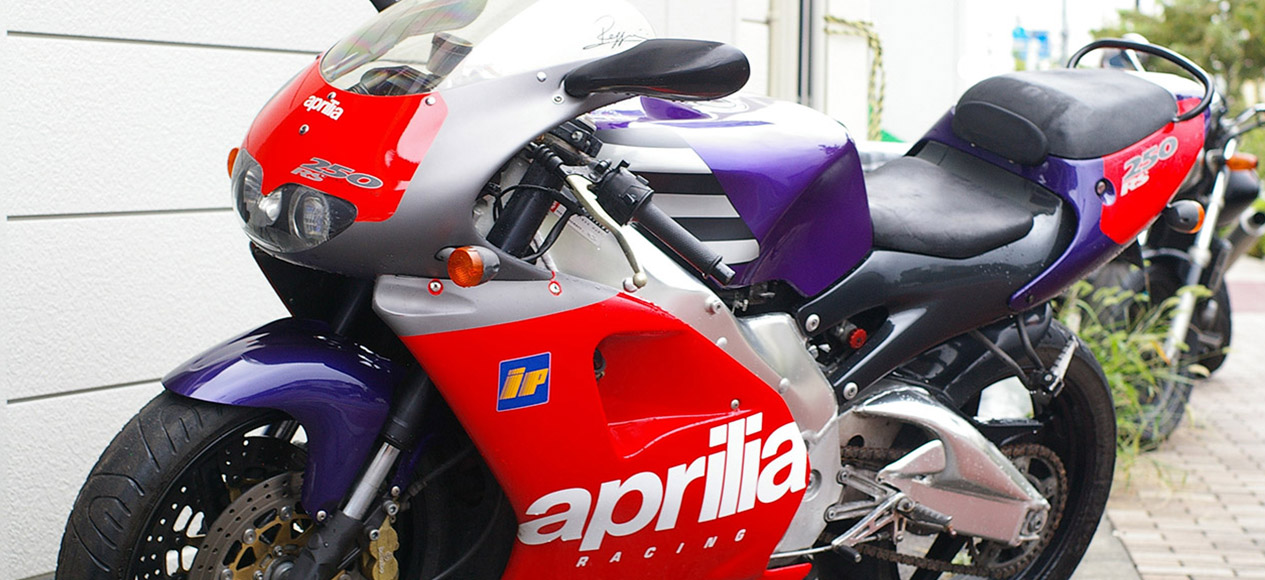
Two-fifties and race reps go together like milk and honey. The quarter litre class was one of the most hotly contested of all motorcycle Grand Prix championships and it was only natural that the technology would filter down to the road.
The Aprilia RS250 is the pinnacle of road going two-stroke 250s. When it was launched, in 1994, Aprilia were the dons in 125 and 250cc Grand Prix racing and had just won their first 250 title with a certain Max Biaggi.
Aprilia had planned to detune their Rotax based race engine for the road bike, but after that proved too big an engineering challenge, they bought in Suzuki’s acclaimed RGV250 motor and tuned it up for a few more horses. The styling was drop dead gorgeous and aped the RSV250 racers, while the chassis tech was cutting edge for 1994.
Emissions regulations saw the end of the strokers as the new millennium dawned, meaning that the Aprilia RS250 took its place as the best of the breed. It’s a nailed on classic.
MZ 250
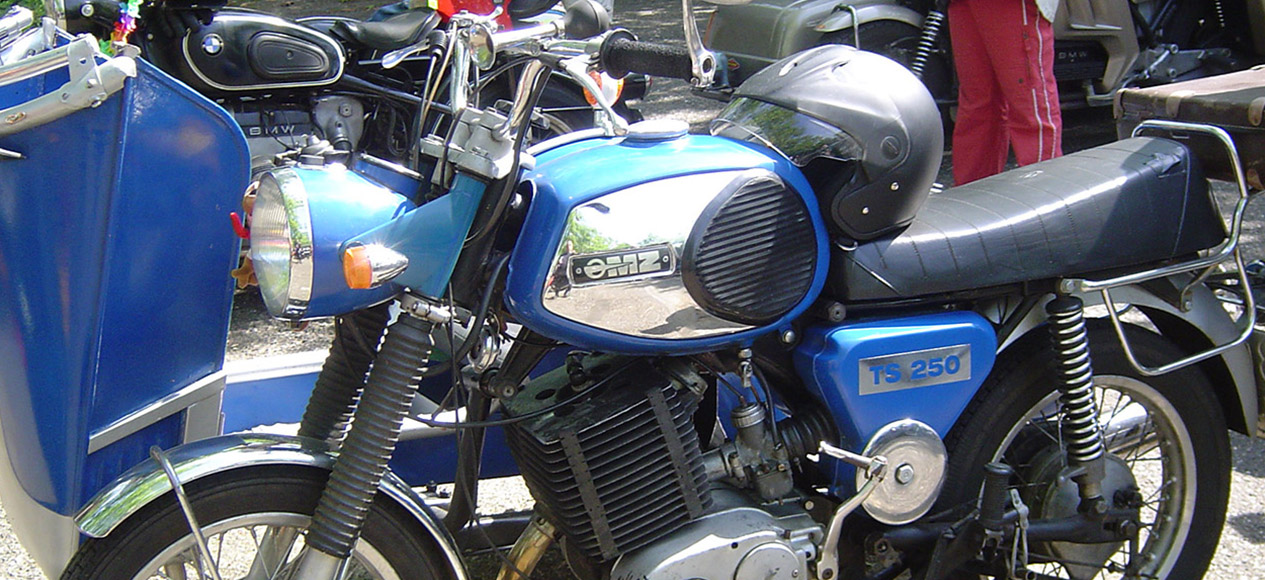
From one end of the scale to the other. East German company MZ (short for Motorenwerke Zschopau) is famous for its simple two strokes.
MZs provided (sort of) reliable transport for Eastern Europeans in the communist years and (along with similarly basic Jawas) were imported into the UK in the 1970s and 1980s as cheap commuters.
The TS250 (and later ETZ250) were as simple as they come. Single cylinder, air-cooled, 250s with no airs and graces – early models even had to make do with pre-mix fuel. Despite being much derided, the MZs gained a cult following over the years. They’re even used as entry level racers at club level today, with the British MZ Racing Club providing one of the cheapest and most accessible entries into motorcycle racing around.
Yamaha TDR250
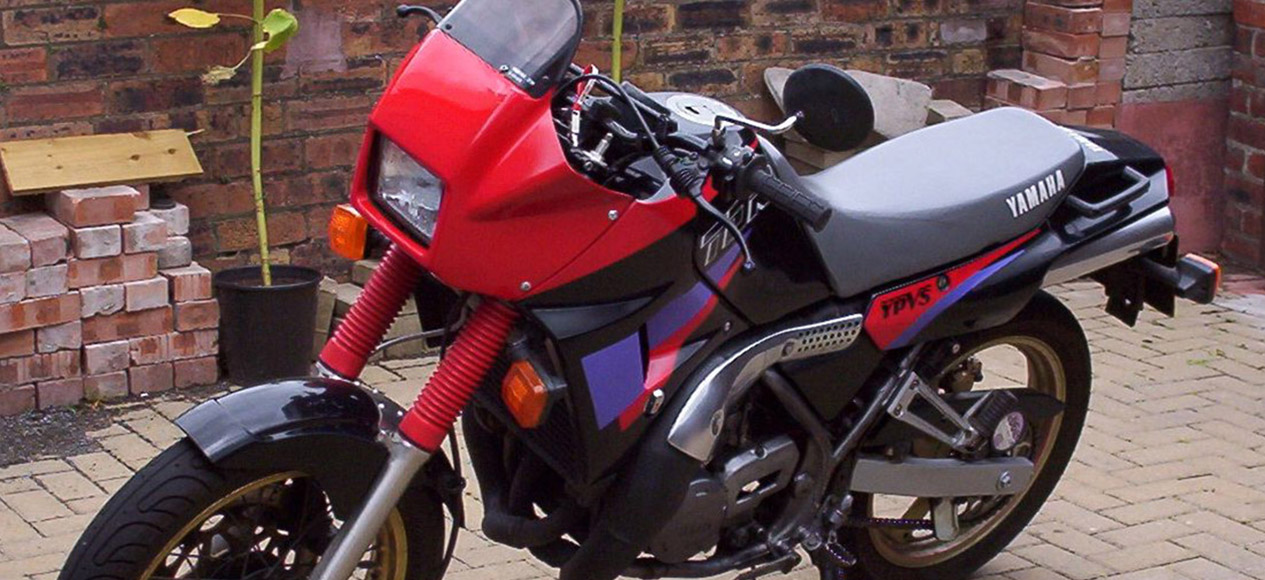
No feature on classic two-strokes would be complete without a Yamaha – indeed you could write an entire book on the Iwata company’s back catalogue.
The company’s second ever motorcycle, the YD-1 of 1957, was a 250cc two-stroke twin, and
Yamaha’s commitment to 250 and 350cc racing during the 1960s, 70s and 80s. Indeed, Yamaha was the last of the Japanese manufacturers to truly embrace four-strokes.
Our selection is probably not the most obvious Yamaha two-stroke, but proves that the category is not just about sports bikes.
The TDR250 was launched in 1988 and shared its parallel-twin 249cc reed valve motor with the sportier TZR250. The chassis was upright, in the style of the TDM850 that was proving a big hit on the continent at the time, giving a sort of sportsbike/off-roader mash up – which sounds so wrong but which was surprisingly effective. The motor was retuned for a chunkier mid-range and Yamaha’s YPVS powervalve system gave good low down characteristics without sacrificing top end power.
The result was a real cult classic which proved ahead of its time. The TDR never really got Brits off their race reps back in the day, but three decades on it has never been more popular and good examples are fetching strong money on the classic bike scene.
Suzuki GT250 X7
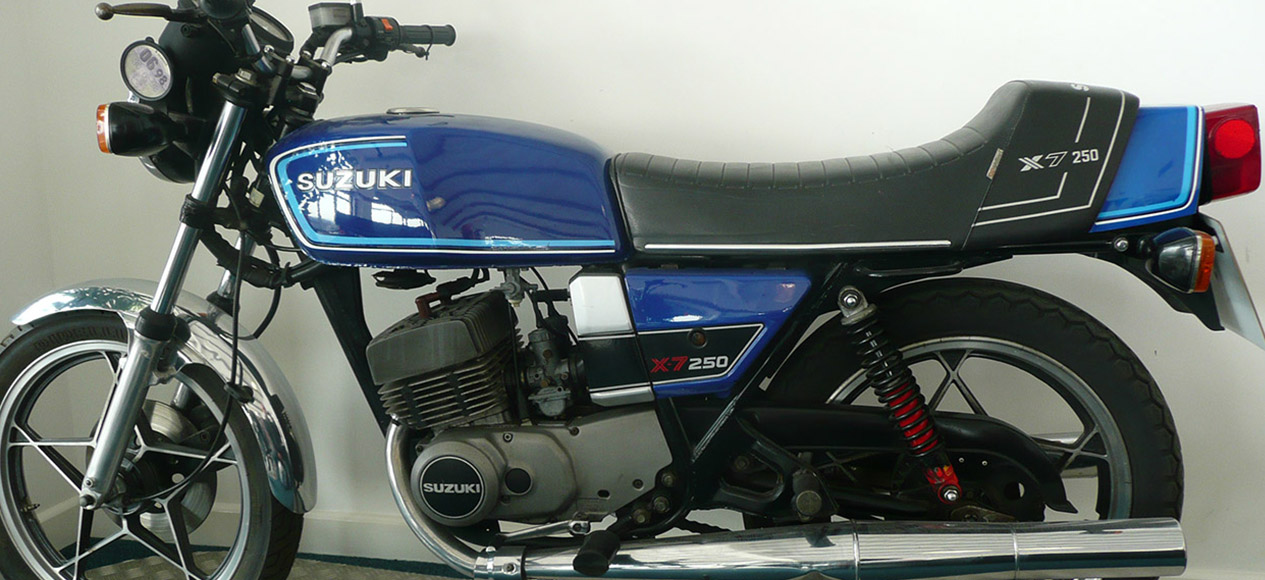
Back in the 1970s all the Japanese manufacturers (except Honda, who were committed to four-strokes) had a sporty two-fiddy in their brochure.
Back then, and even today, fist fights could break out over whether the Yamaha RD250 was better than the three-cylinder Kawasaki S1 Mach I – but Suzuki fans have always had plenty of skin in the game when it’s come to quarter litre howlers, and for many their GT250 X7 is seen as the best of the air-cooled, 1970s, era.
The X7 made 28bhp and weighed just 128kg (over 20kg less than the RD) when it arrived in 1978. That might not sound like much these days but when you consider that 250s were learner legal at the time, they were the hottest ticket in showrooms of the era. Despite the spangly cast alloy wheels, the Suzuki wasn’t as sharp around the corners as the Yamaha, but it (at least claimed to) hit 100mph and that was a big deal for a youthful learner back in the day.
Unfortunately for Suzuki, the X7’s reign was short. Yamaha moved the game on with its RD250LC and RD350LC (LC standing for liquid cooled) models in 1980, while learner laws changed in 1983 and restricted those wishing to ride on L plates to a mere 125cc.
James M25 Superswift
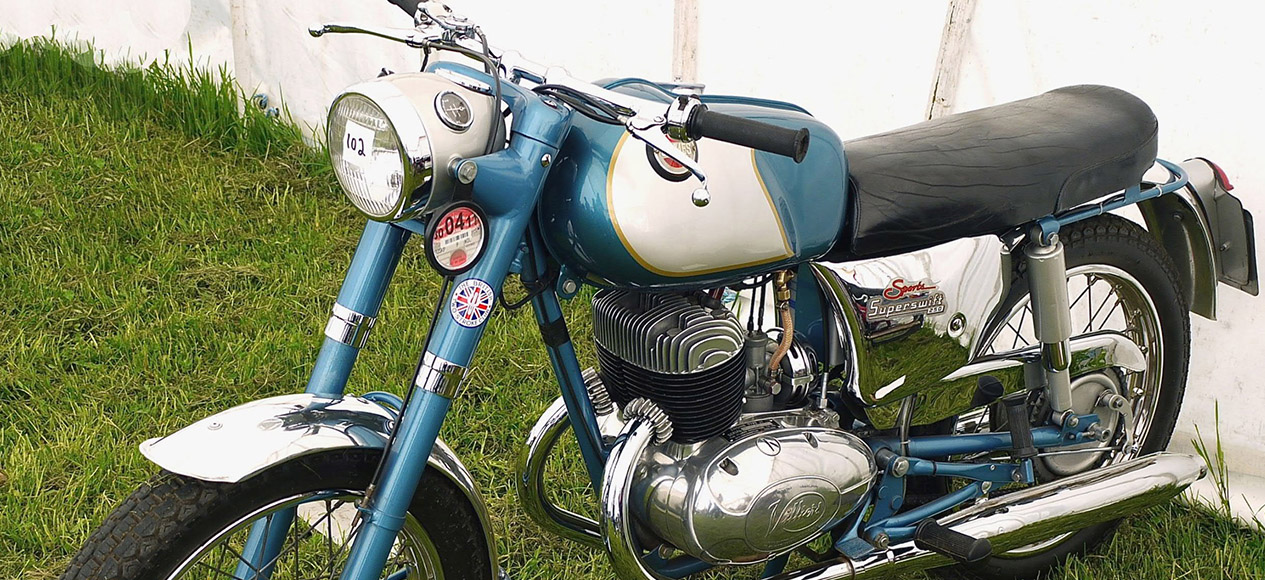
Fancy a 250cc two-stroke but are a committed vintage Brit bike addict?
While the Japanese makers were largely focussing on light and simple two-stroke technology, the British manufacturers tended to stick with their heavier and more complex four-strokes.
Of course, there are a few around and we’ve become quite fond of this, the James M25 Superswift, as it tells an important story in the history of the British motorcycle industry.
By the 1960s, the industry was struggling and a number of small manufacturers had merged in an attempt to stay alive.
James had been founded as a bicycle and light motorcycle manufacturer in Birmingham in 1897. By 1951 it had been taken over by Associated Motor Cycles, which owned the AJS and Matchless brands. The company continued, using two-stroke motors provided by Villiers, and the Superswift was one of the last rolls of the dice.
When it was introduced in 1962, James had been combined with the famous Francis-Barnett brand. The Superswift was closely related to the Francis-Barnett Cruiser Twin 89 and was powered by a Villiers 249cc parallel-twin engine.
It was a decent machine, with strong performance and handling for the time. Styling encompassed the enclosed ‘bathtub’ bodywork of the period and bright blue and white paintwork was a break from James’ traditional maroon livery.
Sadly the Superswift couldn’t arrest James’ decline and by 1966 the company was no more.


